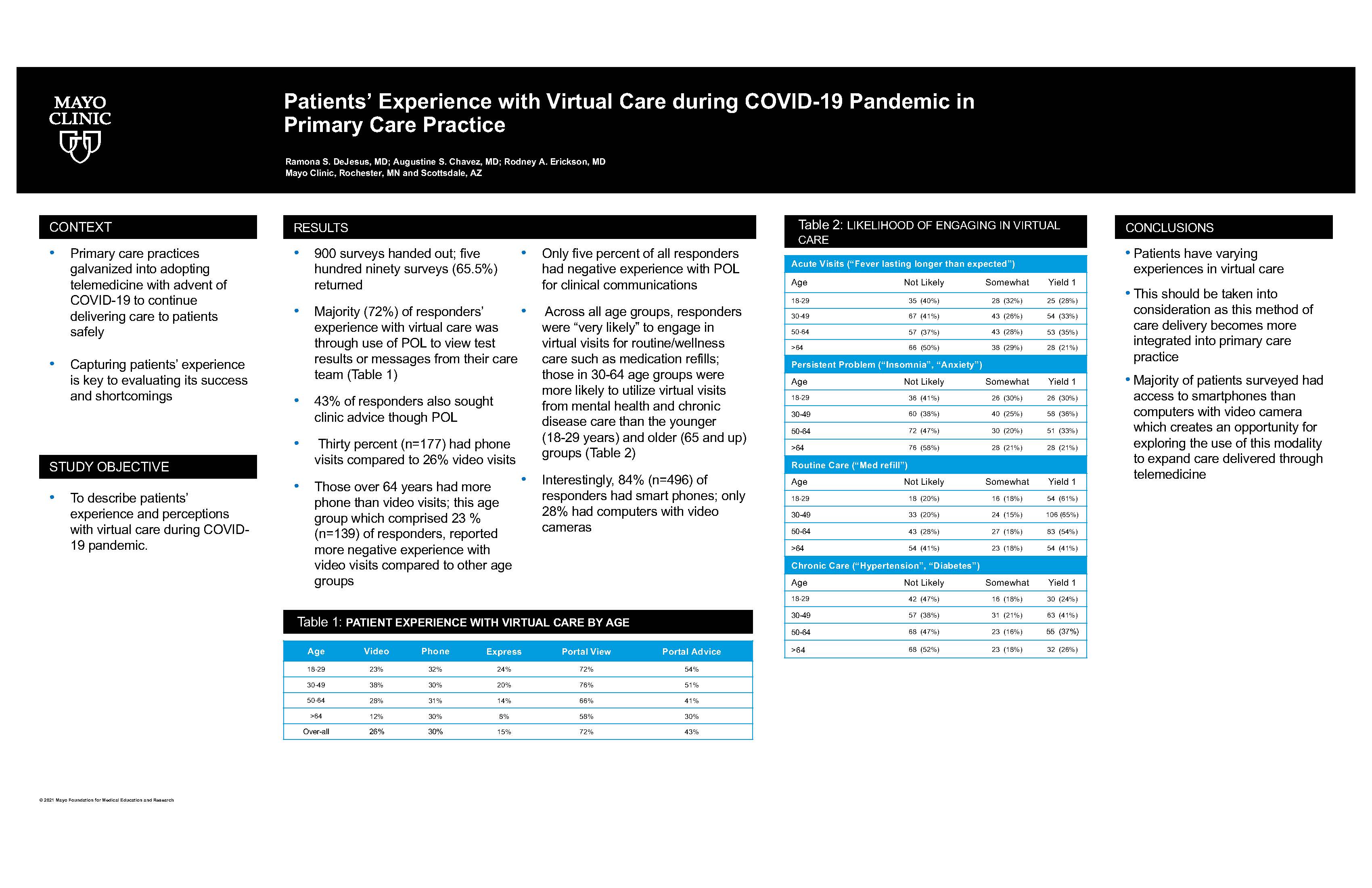PCR049: Patients’ Experience with Virtual Care during COVID-19 Pandemic in Primary Care Practice
Ramona DeJesus, MD; Augustine Chavez; Rodney Erickson, MD
Abstract
Context: The advent of COVID-19 pandemic in March of 2020 galvanized primary care practices into adopting telemedicine to be able to continue delivering care to patients safely. As recipients of care delivered virtually, capturing patients’ experience is key to evaluating its success and shortcomings. Objective: To describe patients’ experience and perceptions with virtual care during COVID-19 pandemic. Study Design/Population: A survey was distributed to 900 adult patients across primacy care practices in MW Minnesota and Arizona from September through October, 2020. Questions asked included: mode of virtual care received (virtual visit, phone visit, secured patient on-line portal or POL), device used, and likelihood of using virtual care for different visit reasons (acute visit, persistent problem, routine/wellness visit or chronic care). Results: Five hundred ninety surveys (65.5%) were returned. Majority (72%) of responders’ experience with virtual care was through use of POL to view test results or messages from their care team; 43% of responders also sought clinic advice though this avenue. Thirty percent (n=177) had phone visits compared to 26% video visits. Those over 64 years had more phone than video visits. This age group which comprised 23 % (n=139) of responders, reported more negative experience with video visits compared to other age groups. Only five percent of all responders had negative experience with POL for clinical communications. Across all age groups, responders were “very likely” to engage in virtual visits for routine/wellness care such as medication refills; those in 30-64 age groups were more likely to utilize virtual visits from mental health and chronic disease care than the younger (18-29 years) and older (65 and up) groups. Interestingly, 84% (n=496) of responders had smart phones and only 28% had computers with video cameras. Conclusion: Patients have varying experiences in virtual care which should be taken into consideration as this method of care delivery becomes more integrated into primary care practice. Majority of patients surveyed had access to smartphones than computers with video camera which creates an opportunity for exploring the use of this modality to expand care delivered through telemedicine.

Jack Westfall
jwestfall@aafp.org 11/20/2021great work. thanks for sharing it with NAPCRG